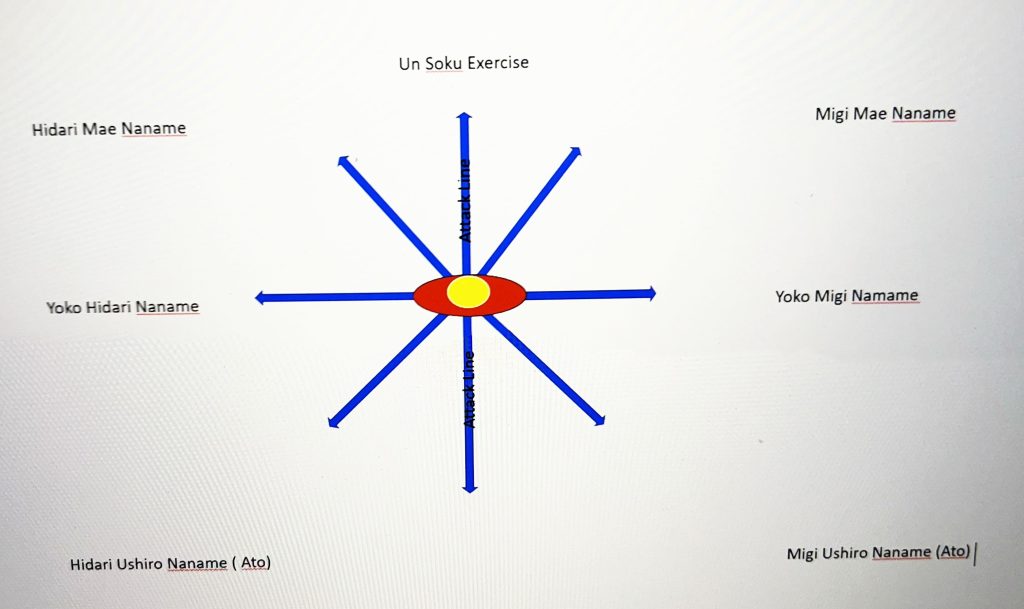This years Winterfest was probably the biggest I have attended for many yearsthe theme for my seminar was foot movements or unsoku an exercise that is designed to help with increasing flexibility in movement. This then develops into a collaborative Tai Sabaki exercise which starts to teach and engrains body avoidance utilizing Tenkan and Tentai.
The exercise is worked in pairs and relies on both partners working with each other to learn the process.

Tenkan/ Tentai is a simple step and turn pivot, keeping relaxed proper spinal alignment ( upwards) and elbows in, breathing is also important. This exercise has its roots in Aikido but is a highly effective tool to learn soft avoidance and whole body movement. The first is tai-sabaki or just avoidance. Someone attacks, generally with a tanto strike although you can use any other attack you like. The defender just get out of the way. In a second phase, the defender can place/block the attack.
The second phase is kakari-geiko or timing. The attack is still really stylised and the attacker does not resist at all, they just attack. The defender now can practice his avoidance (as previously) and if and only if their timing is good, perform a technique. There are subtlety of timing points in there but that is not essential.
The third phase is hikitate-geiko or balance breaking. The attacker now can resists by movement alone. If the defender timing is off, the attacker can move their body/legs/whatnot to negate the technique. The attacker now has to either perform a balance breaker or another technique. To make it less frustrating, after the third technique either the attacker falls over or breaks out. Clearly, if the technique is a good one, the attacker protects themselves with ukemi.
The fourth phase is soft randori or light/soft resistance. The attacker now can increase the resistance with body movement as before but now they get to counter with their techniques. Therefore, if the attacker does a garbage or weak technique, they could be on the end of a counter attack!
The fifth phase of randori-ho training is called shihai or a match. The attacker stops being nice at all. This is full on resistance only stopped (hopefully!) before someone gets hurt. This is the last stage anyone does in a dojo.
Hopefully, this teaches both parties what works for them and what they need to work on. It is hard, frustrating, and exhausting. This is competition with yourself. This is where your Martial Arts skills will improve massively. Every time you get hit or mistime your technique,you learn to improve. You get to hone your skills against opponents who resist in earnest.
What works for you in randori-ho will improve your understanding of kata which in turns improves your understanding on how to make technique work in randori-ho which will improve your understanding of kata which … ad infinitum.
Finally, there is takai or competition proper. It is a tournament with judges, roaring crowds, and chocolate medals for the winners. No one is forcing anyone to do that and it sure is a thing for younger practitioners. It is not part of the teaching method, just an addition for fun in the spirit of Pierre De Coubertin:
Lee Adams 8th Dan IUKF GB, 4TH Dan British/Japanese Aikido Association – Chair of the BAA.


